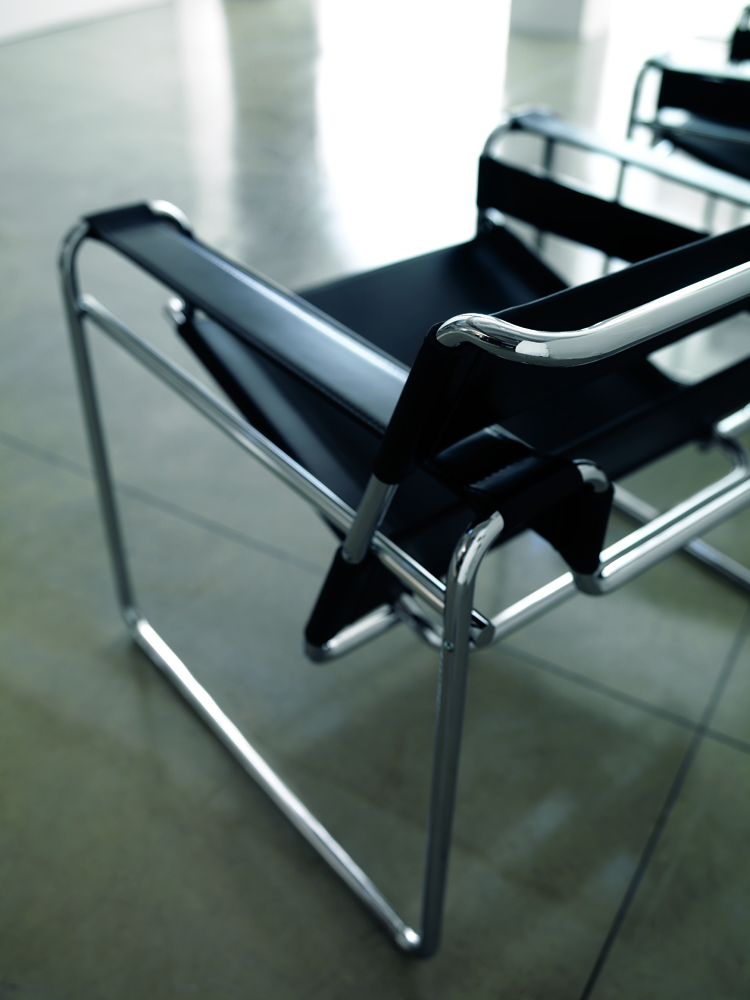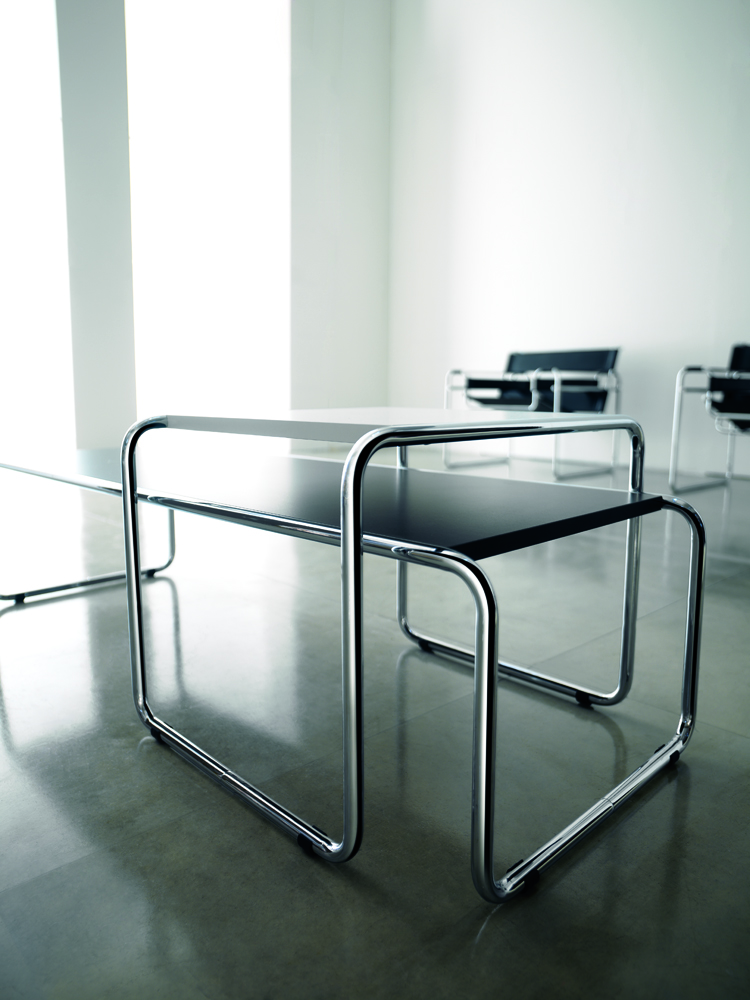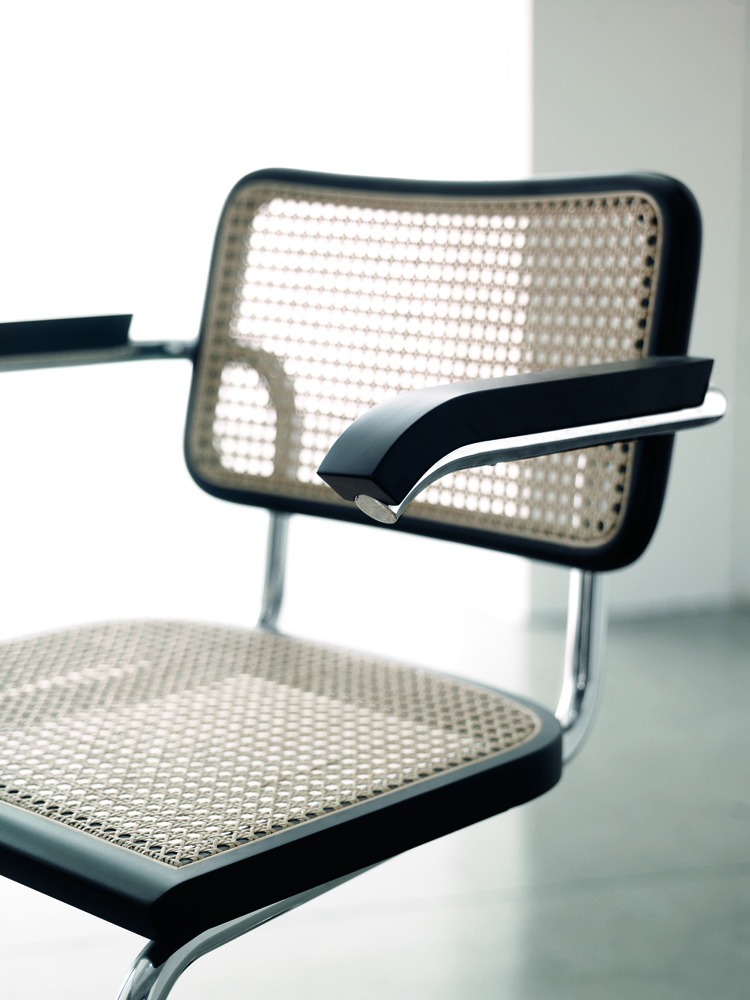
BREUER
1902 – 1982
Marcel Lajos Breuer was born in Pécs, Hungary in 1902. He was a student of the Bauhaus from 1920 to 1924 and started out his career in his family’s carpentry studio. He worked for the Bauhaus as a teacher from 1925 to 1928, where he led the furniture lab.
Breuer remained inextricably linked to the principles of the famous German school, recognizable in all of his works. In the field of design his most incisive and innovative contributions were indubitably furniture made with steel tubes, and in particular the first few chairs built of structures of tubular steel. Designed and first produced in 1925, they helped to lay the foundations of a new and modern residential culture. For this reason he is considered
a pioneer in the use of steel, which until then was used only as an industrial material, using it in designs and as furniture that were truly modern.
However more than design, his curiosity and desire to experiment led him to explore other creative possibilities: in 1939 he began a dazzling career as architect in the US. In the 1950s and 1960s he produced such important projects as the headquarters of the UNESCO in Paris and the Whitney Museum of American
Art in New York. Although defined as a rationalist, Breuer was never unilaterally dedicated to rationalism. Before many others, he treated cement buildings as sculptures, despite their functional use. The great quality of his architecture is precisely due to the beauty of his buildings combined with their great functionality.
He died in New York in 1981.


